New interactive map viewer reveals growing capacity and rare earth element content of UK wind farms
BGS’s new tool highlights the development of wind energy installations over time, along with their magnet and rare earth content.
16/05/2025 By BGS Press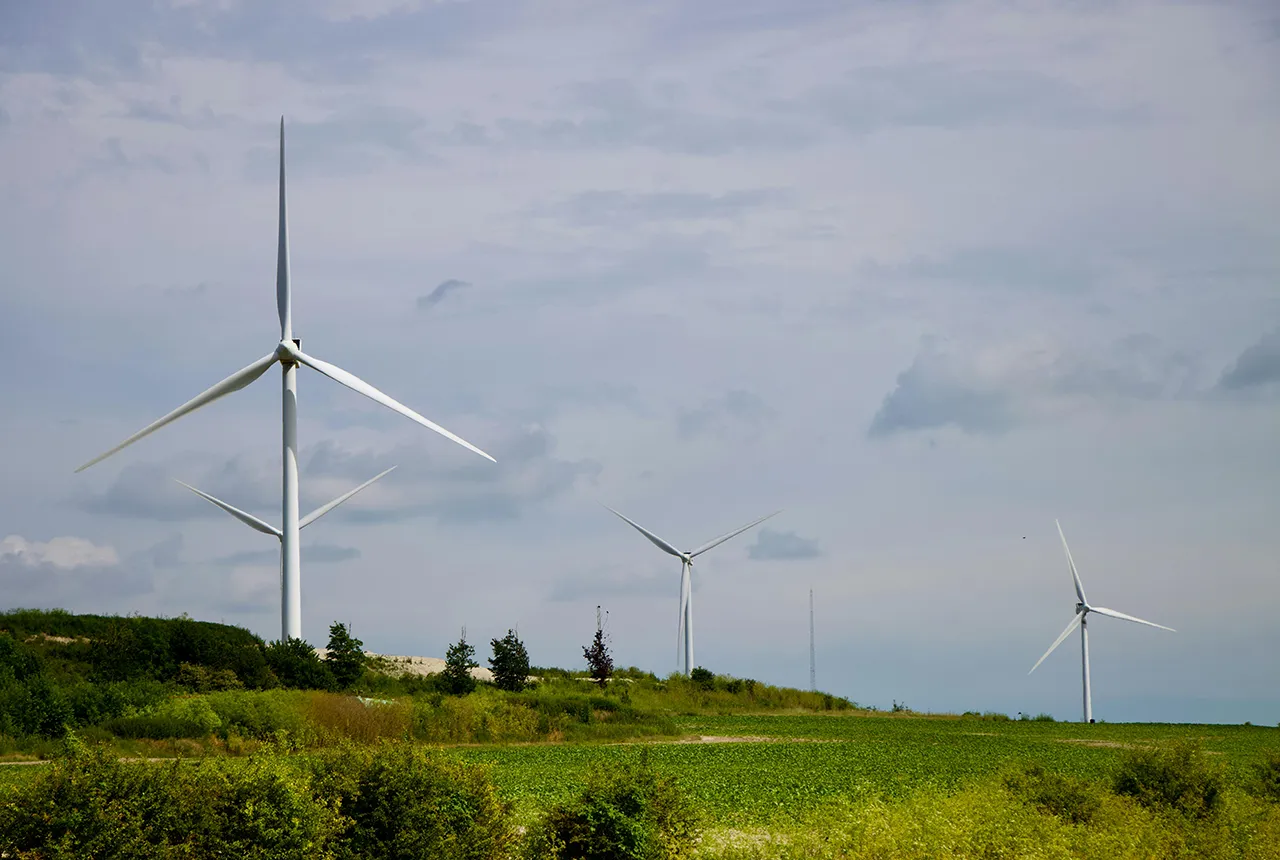
Wind energy has seen a significant rise across the UK over the last 30 years, playing a crucial role in decarbonisation and increasing security around our energy supply. Within the next five years, the UK aims to install up to 50 GW from offshore wind deployment alone, more than three times that which is currently installed (16 GW). This target is driving demand for the critical materials required to produce wind turbines, with technology metals, such as the rare earth elements, playing a major role.
A new interactive map viewer created by BGS highlights the growth of wind farm deployment across the UK over time, alongside the change in power generation capacity, the wind farms’ expected life spans and their rare earth element and magnet content. The tool is hosted by the UK Technology Metal Observatory, providing information about technology metals and the circular economy approach for ‘green’ technologies such as wind turbines and electric vehicles.
Wind turbines are expected to reach their end-of-life at approximately 25 years. The new tool also estimates when this is likely to be for each site, highlighting when the wind turbines are likely to become available for re-use, refurbishment, remanufacture or recycling.
Accurate data on magnet and rare earth element content in wind turbines is essential for unlocking circular economy opportunities, enabling the recovery of high-value materials and supporting more sustainable business models.
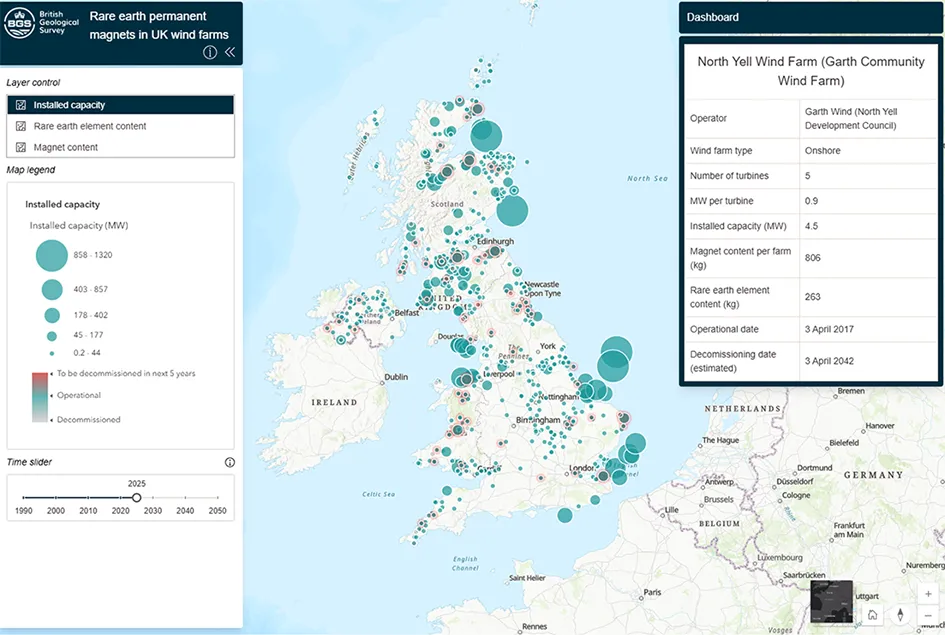
Screenshot of the new interactive tool. BGS © UKRI.
We are pleased to launch this innovative new map viewer, which provides key insights into wind energy installations across the UK including the installed capacity and the rare earth element and magnet content.
We hope that the tool helps increase the understanding of critical minerals in wind farms and the resources they contain. In order to improve the circular economy, we need to better understand the material stocks in our wind farms and their lifetime to plan for their re-use or recycling when they reach end-of-life. As the UK is currently highly dependant on imports of rare earth elements and rare earth permanent magnets, secondary resources from end-of-life wind turbines can boost the UK’s supply in the future.
Stefan Horn, minerals commodity analyst at BGS and the lead developer for the new tool.
The map was created as part of an Innovate UK CLIMATES project and was co-funded by Met4Tech.
Our future resources are not only in the minerals below the ground but also in the materials we are already using. Mapping and understanding our above-ground resources, as BGS has done in this excellent map, is essential to give us the circular economy we need for a lower carbon world.
Frances Wall, principal investigator, UKRI Interdisciplinary Circular Economy Centre for Technology Metals (Met4Tech).
Related news
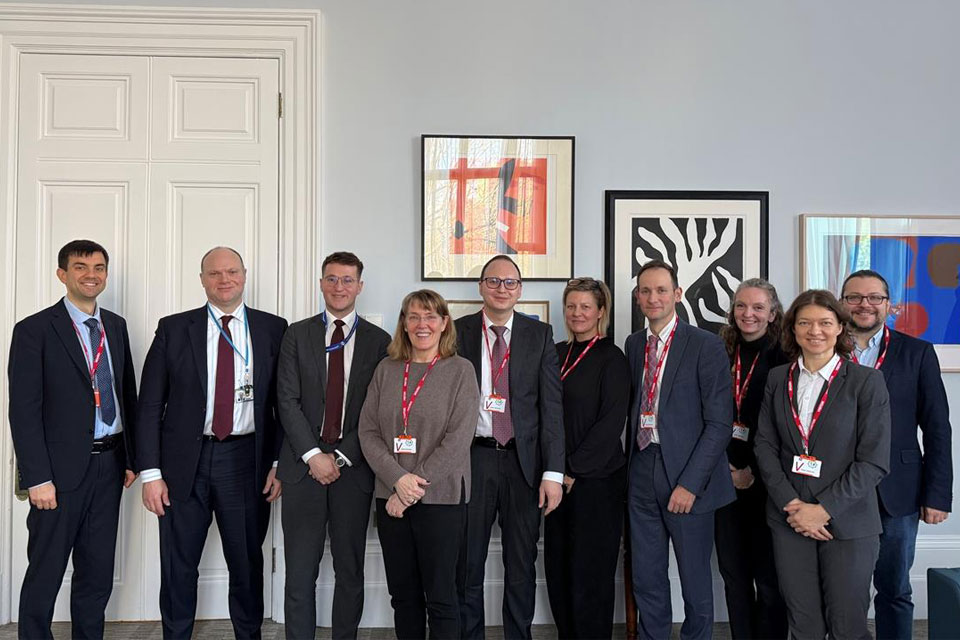
BGS agrees to establish collaboration framework with Ukrainian government
11/12/2025
The partnership will focus on joint research and data exchange opportunities with Ukrainian colleagues.
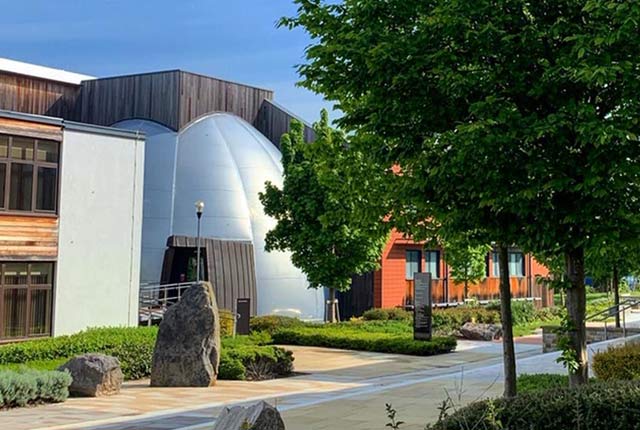
Making research matter: BGS joins leading research organisations in new national initiative
10/12/2025
A new alliance of 35 organisations has been formed that is dedicated to advancing science for the benefit of people, communities, the economy and national priorities.
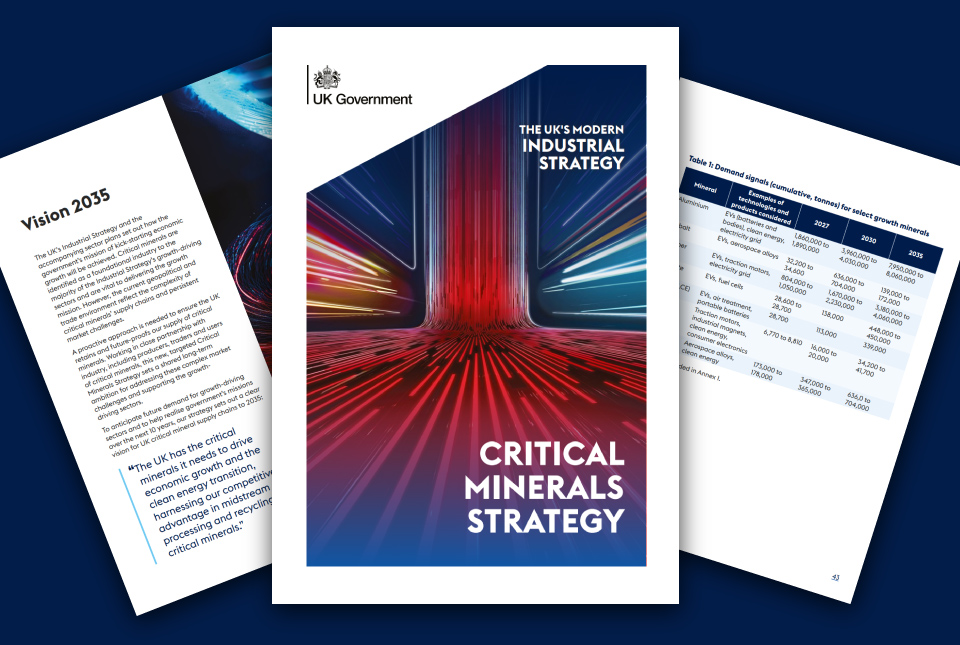
BGS welcomes publication of the UK Critical Minerals Strategy
23/11/2025
A clear strategic vision for the UK is crucial to secure the country’s long-term critical mineral supply chains and drive forward the Government’s economic growth agenda.
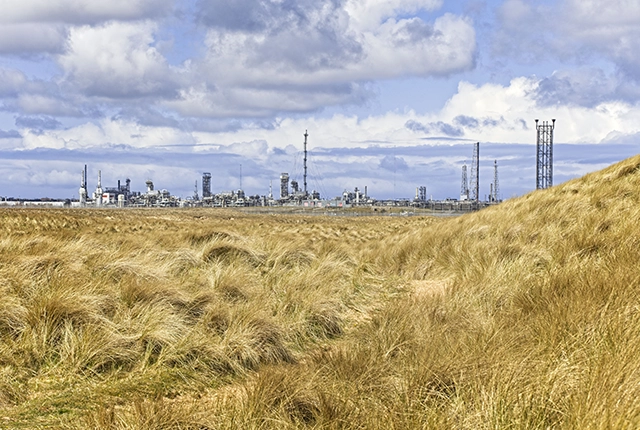
New funding awarded for UK geological storage research
21/11/2025
A project that aims to investigate the UK’s subsurface resource to support net zero has been awarded funding and is due to begin its research.
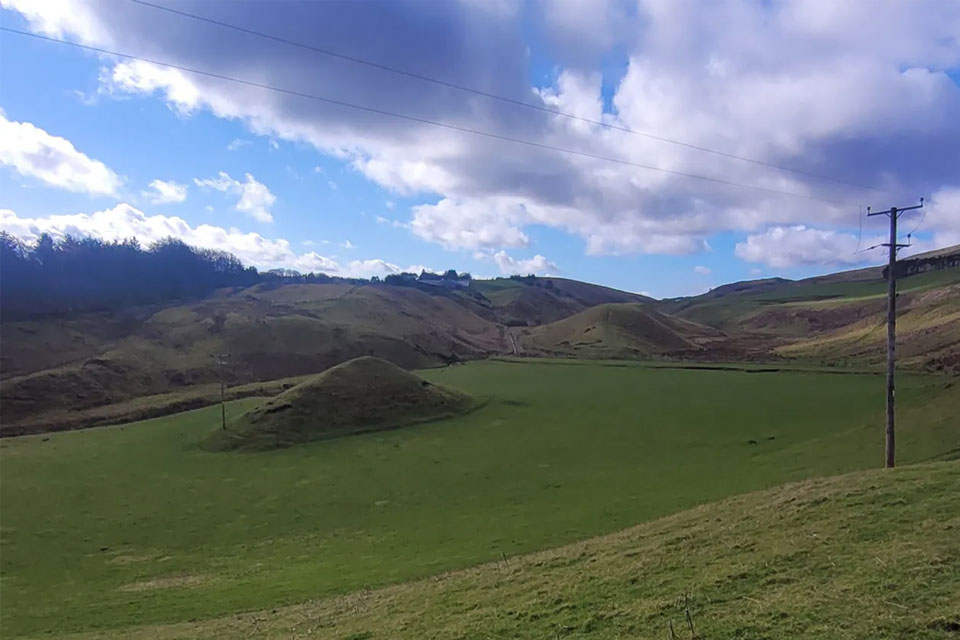
How the geology on our doorstep can help inform offshore infrastructure design
19/11/2025
BGS is part of a new collaboration using onshore field work to contextualise offshore data and update baseline geological models which can inform the sustainable use of marine resources.
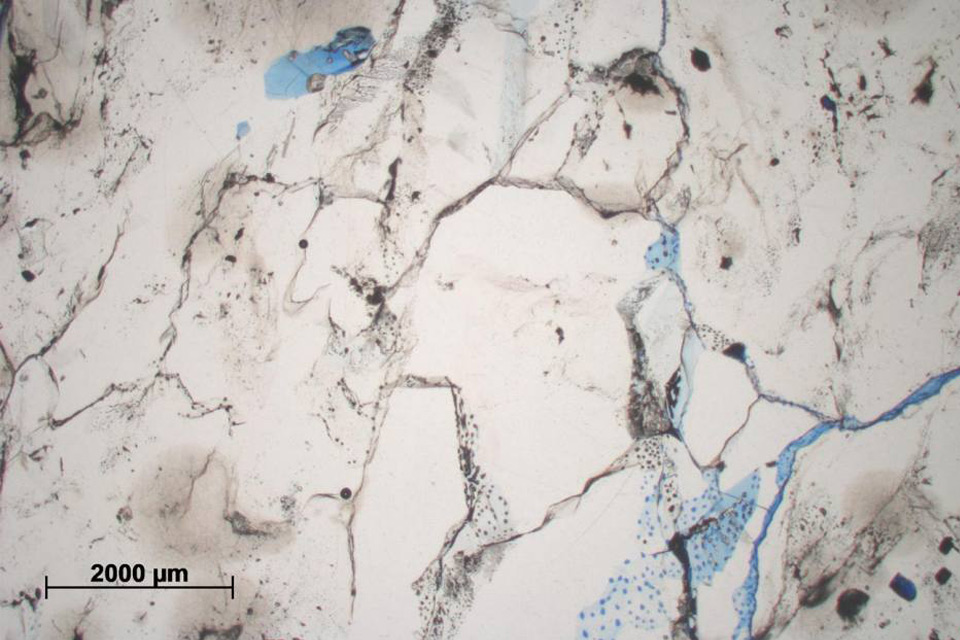
Funding awarded for study on hydrogen storage potential in North Yorkshire
22/09/2025
A new study has been awarded funding to explore the potential for underground hydrogen storage near the Knapton power plant.

New geological ‘pathways’ discovered beneath Welsh capital
02/09/2025
Scientists have discovered cavities in the clay underneath Cardiff, which will influence the siting of future geothermal developments.

Dr Kathryn Goodenough appointed as honorary professor by the University of Aberdeen
25/08/2025
Dr Goodenough will take up the position within the School of Geosciences with a focus on critical minerals and the energy transition.
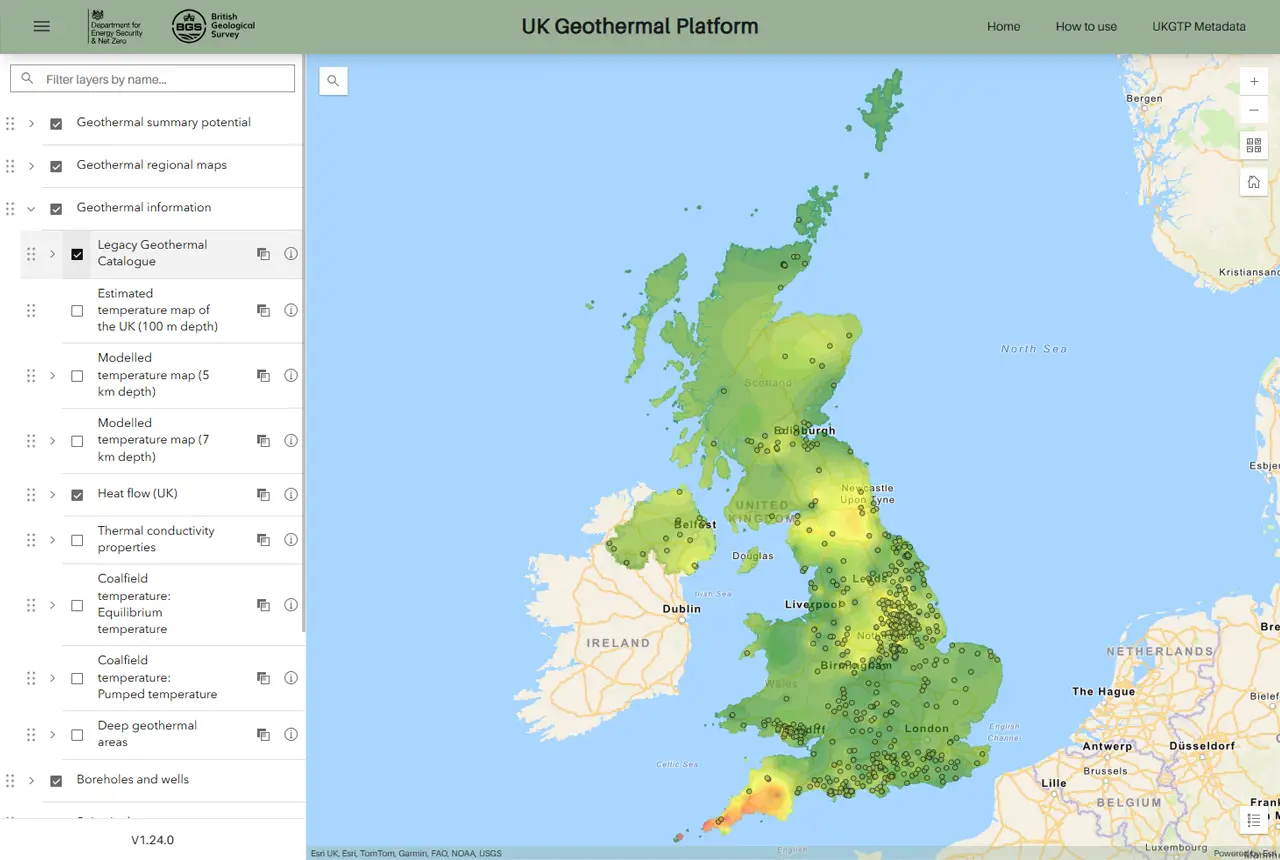
New platform highlights geothermal potential across the UK
11/08/2025
A new government-funded geothermal initiative, which includes an interactive map, has launched to help decision makers assess the geothermal potential across the UK.
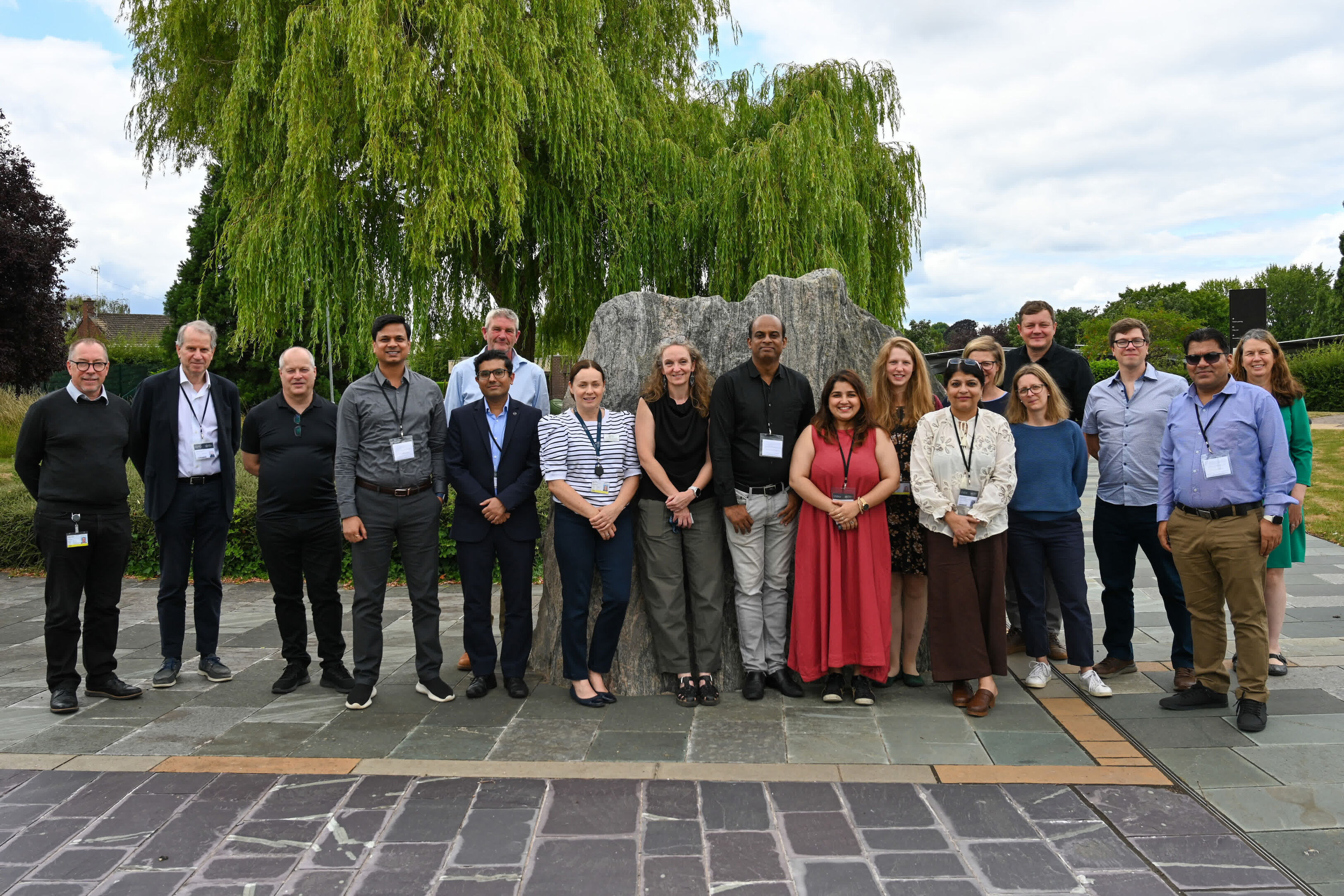
BGS hosts India for ‘deep dive’ on carbon capture and storage
30/07/2025
Some of India’s top scientists visited BGS to explore the UK’s carbon dioxide storage research potential.
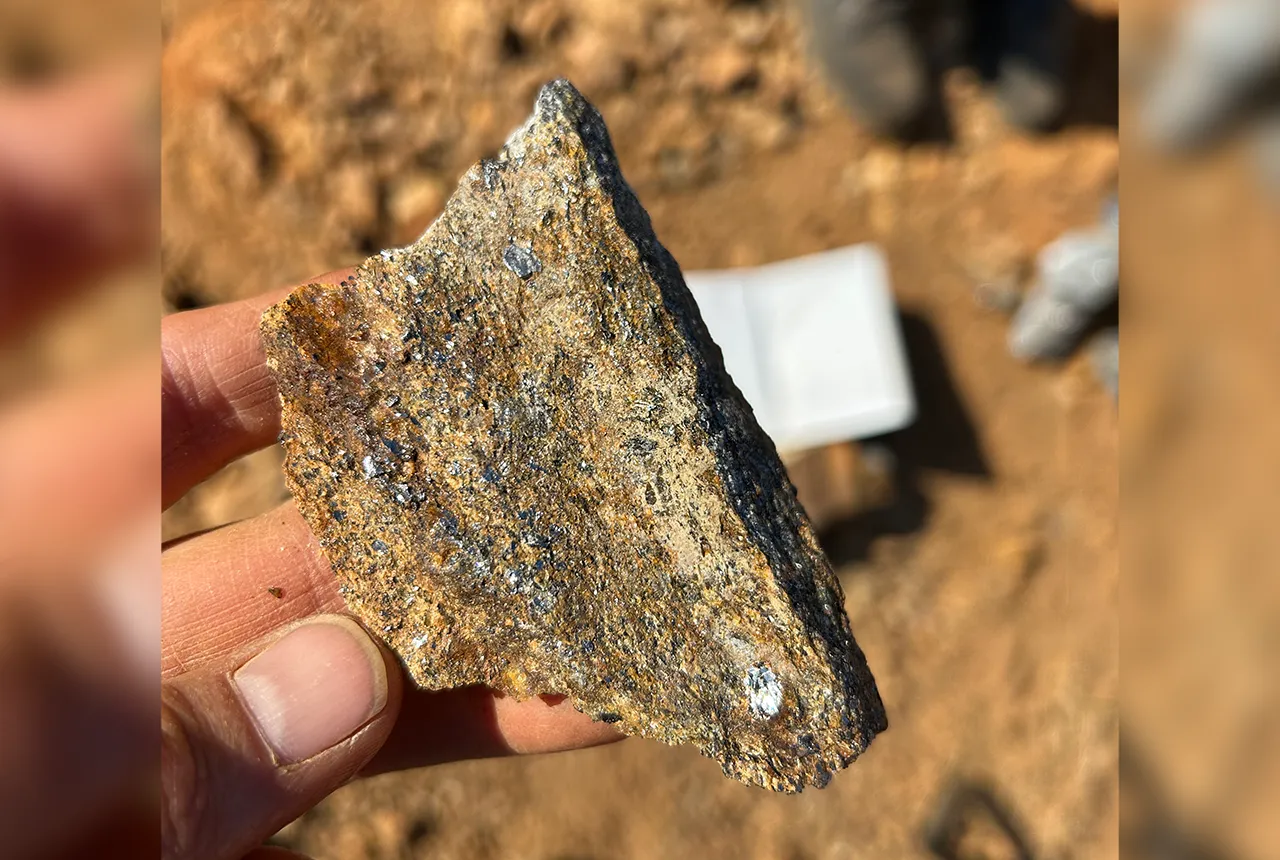
Zambia’s first critical minerals guide supports the country’s potential in global clean energy transition
18/07/2025
A new guide to Zambia’s critical minerals highlights the country’s current and potential critical mineral resources, including cobalt and lithium.
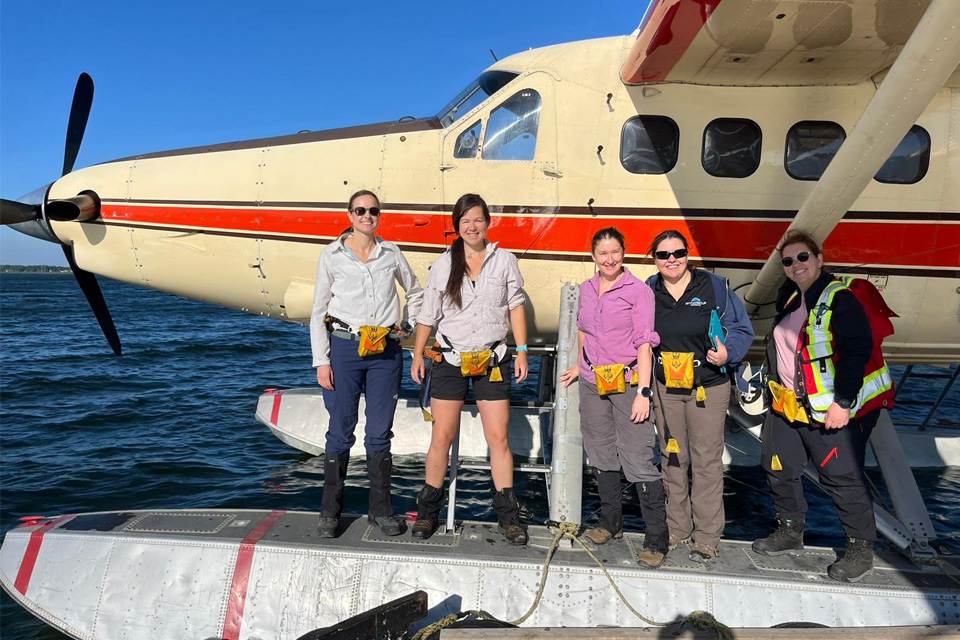
Funding awarded to UK/Canadian critical mineral research projects
08/07/2025
BGS is part of a groundbreaking science partnership aiming to improve critical minerals mining and supply chains.




